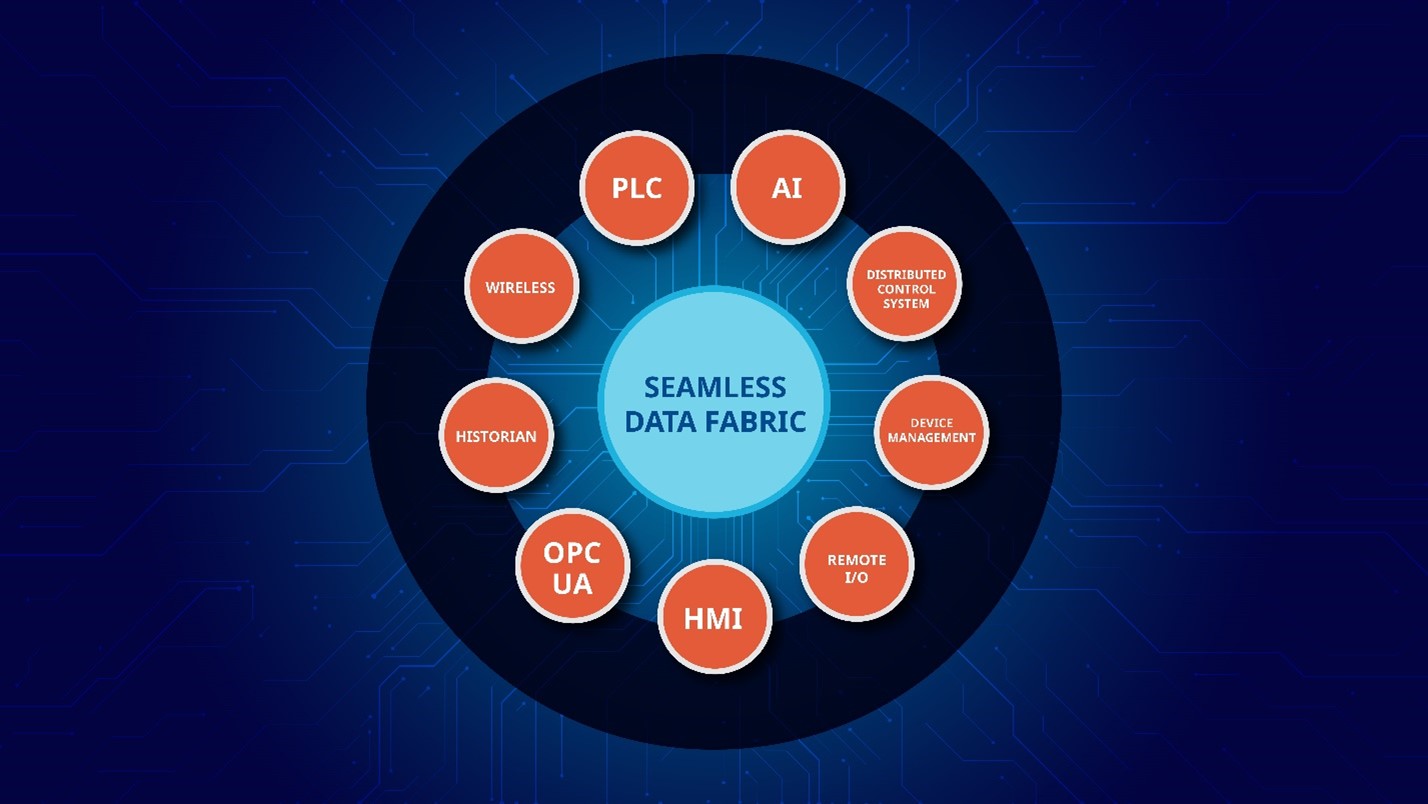
AI seems to be everywhere these days. It’s on our phones, it interacts with us when we need customer service, it’s generating art and entertainment—the list goes on and on. However, one place where AI tools don’t seem to be making an appearance is at the control level of process manufacturing plants. There’s a very good reason for that: traditional controllers run on embedded hardware that doesn’t have the performance capabilities to run such resource-intensive tools.
In fact, there are many software solutions that could be transformative for operations but cannot realistically be run on traditional control system architecture. And, as Claudio Fayad shares in his recent article in Control Engineering, those limitations are stalling companies’ ability to digitally transform operations.
“When isolated, the DCS does not scale well, nor does it pair as well as it could with other critical automation solutions. Implementing new technologies and strategies requires either breaking into the control layer or finding a way to push data out of that layer to other systems and solutions. It can be done, but it takes lots of time and money, as well as a deep bench of dedicated, expert personnel to engineer and maintain the automation system.”
But, where some may see setbacks, Claudio sees an opportunity. That opportunity is the enterprise operations platform—a seamlessly integrated process-control platform that does away with the traditional system-of-systems approach to automation design in favor of an integrated platform evolved directly from the distributed control system.
System-of-systems strategy is limiting
When automation systems are built piecemeal, teams sacrifice scalability and simplicity. Typically, the many systems necessary for plant operations must be custom engineered to interconnect, and that engineering is often complex and fragile. Claudio explains,
“When an engineer makes a change to the DCS—adding a new sensor, replacing or upgrading equipment, implementing new alarms and alerts, etc.—those changes have cascading effects across the system of systems. The engineer may need to reconfigure OPC UA, adjust alarm management, reconfigure a connection to the historian, update asset models to account for new parameters, and perform other time-consuming tasks.”
So, teams either spend lots of time designing, adjusting, and troubleshooting changes, or as is most often the case, they simply put off any changes and let the control system stagnate, making it difficult or impossible to unlock operational excellence.
A new way forward
This complexity of interconnected automation systems has automation solution providers working to define a new paradigm of control. At Emerson, that change started with the Boundless Automationsm vision for seamless mobility of contextualized data from the intelligent field, though the edge, and into the cloud. However, building the tools necessary to break down data silos was only the first step. The next step is to evolve process control away from a system-of-systems toward an enterprise operations platform,
“In contrast to the system-of-systems approach, an emerging strategy for building an enterprise operations platform is evolving the already natively integrated DCS itself to create a more efficient solution. When the control system evolves into a seamlessly integrated operations platform, its functionality shifts. Process control is simply a single function of the overall platform, as are advanced control, data historization, alarm and event management, reliability, data analytics, safety, compressor controls, and more. Instead of being focused entirely on process control, the center of the enterprise operations platform is data integrity, availability, and security.”
A seamlessly integrated automation platform will be easier to install, manage, update, and secure, because all new solutions will be designed to interconnect out of the box, and will have the DCS—the largest container of data in the automation platform—right at the heart of the technology.
The ultimate goal is a more future-proofed investment in the automation stack, making it easier to add emerging technologies like AI, Ethernet-APL, and more without requiring operations teams to rip and replace their hardware every time they want to add a new capability.

